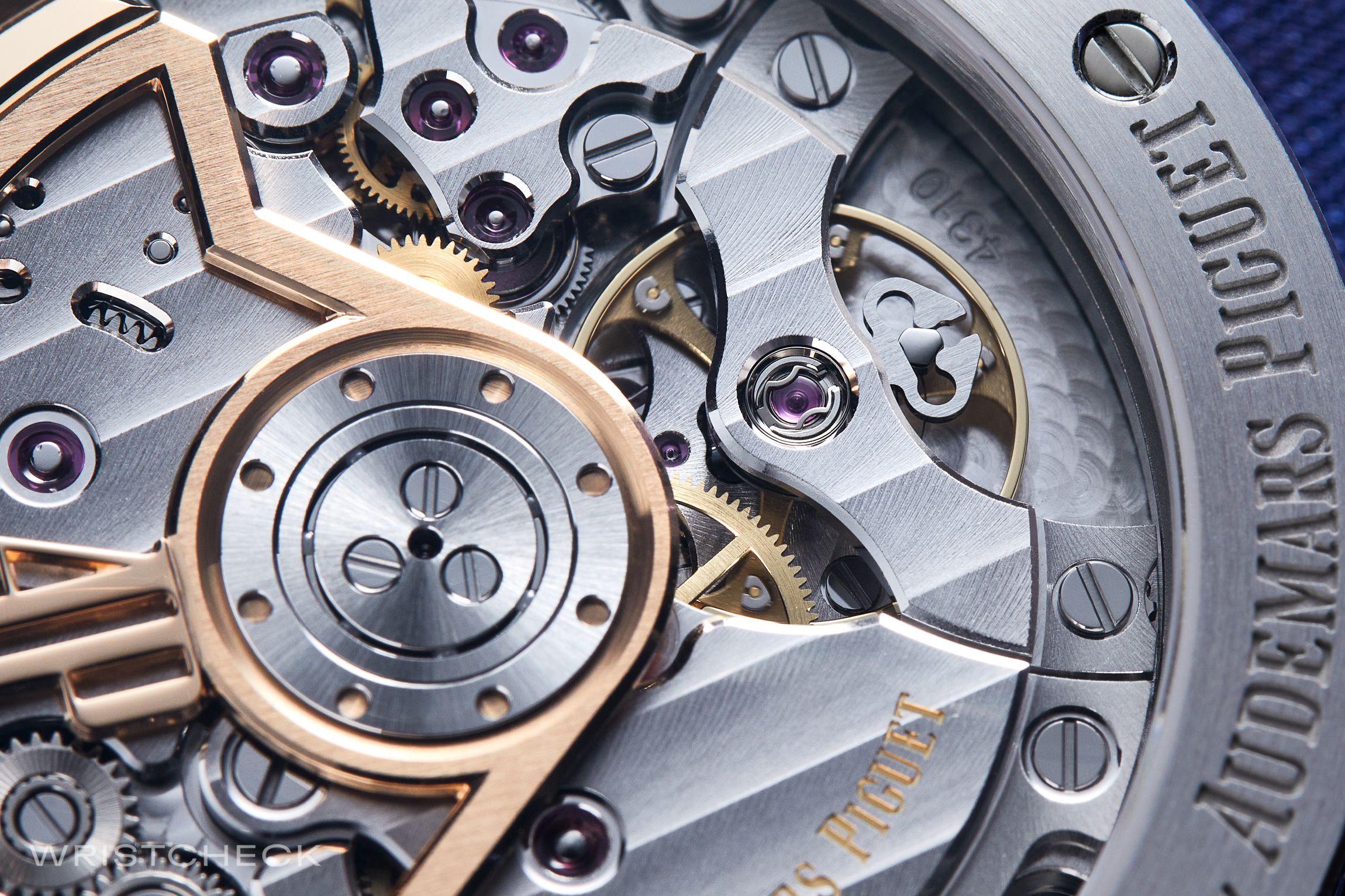
The Code 11.59 by Audemars Piguet Starwheel
One of the most influential watches from the 1990s, the Starwheel is back with its famous wandering hour complication now presented on a contemporary white gold Code 11.59 case and a stunning aventurine dial
Late last year, Audemars Piguet announced a brand new addition to the burgeoning Code 11.59 line — a collection which has really come into its own, stepping out from the shadow of both the Royal Oak and the drama that surrounded its launch. Code, as it's known, has a distinctive personality — equal parts sporty and classy — and it is at its best when complication is involved.
This watch, the Code 11.59 Starwheel, delivers on that brief. Ostensibly it's a 41mm white gold watch on a casual strap with an aventurine dial and a distinctive wandering hour complication, but the Starwheel has a storied history at Audemars Piguet, and is regarded by many as one of the most influential watches of the modern era.

A Brief History Of The Starwheel
The Starwheel was initially produced for a short time and in small numbers. It was introduced in 1991 and retired five years later, but it left a long shadow on Audemars Piguet, and on the mechanical watchmaking renaissance in general. The wandering hours complication is uncommon in watchmaking. While it originally dates back to the 17th century, it showed up on pocket watches from Breguet and Vacheron Constantin. The concept is quite ingenious, as in the traditional configuration, the hour is displayed through an aperture that serves double duty as the minutes indicator.
What Audemars Piguet did with their Starwheel, which was quietly revolutionary, was open it up. The hour window, along with most of the dial, was gone. The top of the dial consisting of a 120-degree arc between 10 and 2 – is used for the minutes display. The rest of the dial is made up of an ingenious system of three sapphire hour discs, each printed with 4 hours a piece. At the center of each disc is the eponymous Starwheel, an eight-toothed wheel that saw each disc rotate 90 degrees once per hour, allowing the central wheel that carried this delicate ensemble to rotate once every three hours.

Though the initial run of Starwheels might have been short, as a complication, it showed up with some frequency in the Audemars Piguet catalogue, albeit in very limited numbers. One much-loved example is the 'John Shaeffer' pieces, cushion-cased models made in honor of an important historical watch commissioned by an American industrialist. By 2000 though, the complication — built off a JLC Caliber 888 base — was put to pasture, an inevitable byproduct of the brand's decision to focus on in-house calibers.
While the new millennium marked the death knell of this idiosyncratic AP, the watch lived long in the memories of a very specific set of people — independent watchmakers. The pioneering design inspired the emergent indies, opening up ways to tell the time that involved more than just two hands and 12 numbers. Urwerk is the most obvious example of a brand that picked up the torch of the Starwheel, but you would be hard-pressed to find an independent watchmaker who came through the ranks in the 90s and early 00s who would not acknowledge the influence of this seminal design.
Decoding The Code 11.59 Starwheel




So what about the Starwheel today? Well, Audemars Piguet has managed to pull off a neat trick by making a comprehensive overhaul of the iconic design that honors the legacy without being subsumed into reissue territory. The original from the 90s and this new model occupied similar places in the wristwatch landscape: unusual statement pieces that sit somewhere between formal and sporty. Perhaps the biggest takeaway here is to look at how far the needle for that particular niche has moved in 30 years.
A lot of the heavy lifting in this design — as with all Code 11.59 pieces, is down to the incredible case design — here in white gold with a black ceramic case middle. On top of that, there's the sleek, cohesive dial using key Code 11.59 design elements – like the signature typeface and aventurine elements, that combine to make this new Starwheel feel very current.


Of course, the caliber is contemporary too. It's still made in a modular way, only now the base movement is AP's own caliber 4309. With the Starwheel mechanism (which now has black wheels instead of clear, greatly improving legibility) on top, it's called the 4310 — and still offers 70 hours of power reserve, despite the extra load. It's priced in line with the Code 11.59 chronographs, and the combination of historical significance, cohesive design and unconventional complication makes this a hit. But more than that, it proves that Audemars Piguet is using its strong legacy to look to the future.




Specifications
Code 11.59 by Audemars Piguet Starwheel
Reference Number: 15212NB.OO.A002KB.01
Movement: Selfwinding Caliber 4310
Frequency: 4 Hz
Functions: Wandering hours; minutes, seconds
Power Reserve: 70 hours
Dial: Blue aventurine dial; black opaline aluminum discs; 18-karat white gold hands
Case: 41mm white gold case; black ceramic middle case
Water Resistance: Up to 30m
Strap: Rubber-coated strap with white gold pin buckle
Price: USD 57,900
For further information, visit Audemars Piguet.
